 Franklin’s Gull adult in breeding plumage
Franklin’s Gull adult in breeding plumage
Franklin’s and Laughing Gulls are very similar in appearance, they both have dark hoods during the breeding season along with reddish legs, feet and bills. They both have white chests, white eye-arcs and soft gray plumage on their backs and wings.
Franklin’s Gull are smaller and more delicate in appearance than Laughing Gulls and during the breeding season (and some times nonbreeding season) they can have a pink tint to their chests and underparts.
The eye-arcs in Franklin’s Gulls are broad and more prominent than they are in Laughing Gulls. Their bills are also shorter and thinner.
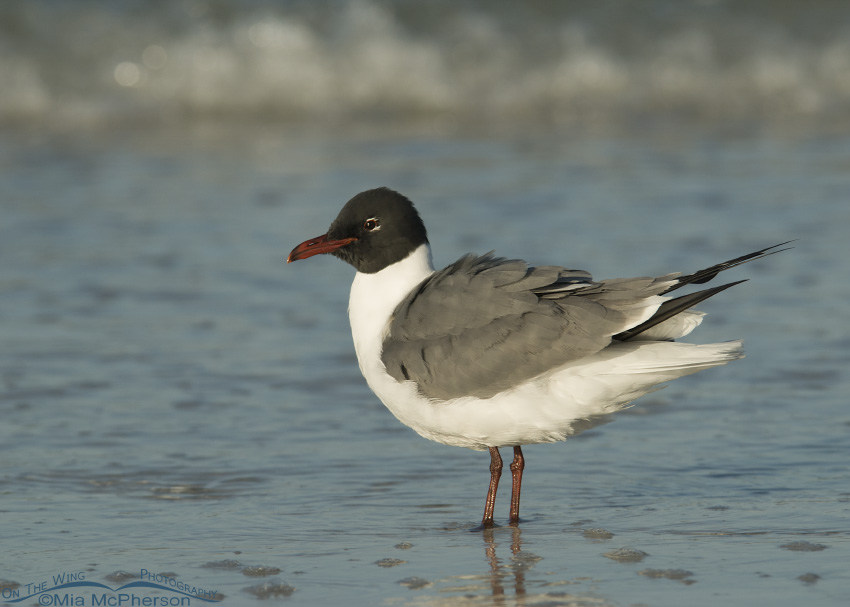 Fluffed up Laughing Gull in breeding plumage
Fluffed up Laughing Gull in breeding plumage
Laughing Gulls have small white spots on their primaries where Franklin’s Gulls have larger spots on their primaries. Those white spots on the primary feathers of gulls are called “mirrors”.
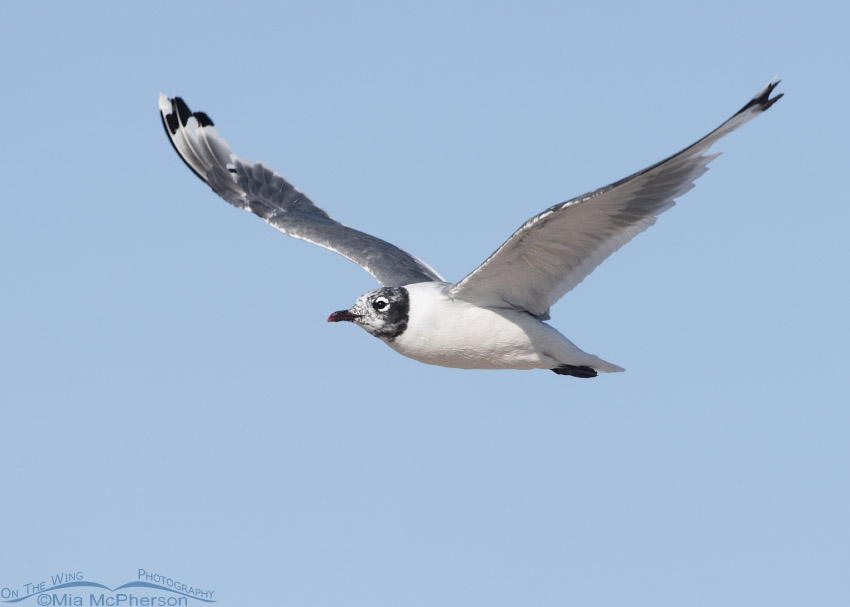 Franklin’s Gull molting to nonbreeding plumage
Franklin’s Gull molting to nonbreeding plumage
Franklin’s Gulls are found at inland locations during their breeding season in western areas of North America nesting in marshes and freshwater and saline lakes. Only during migration and winter are they found in coastal areas.
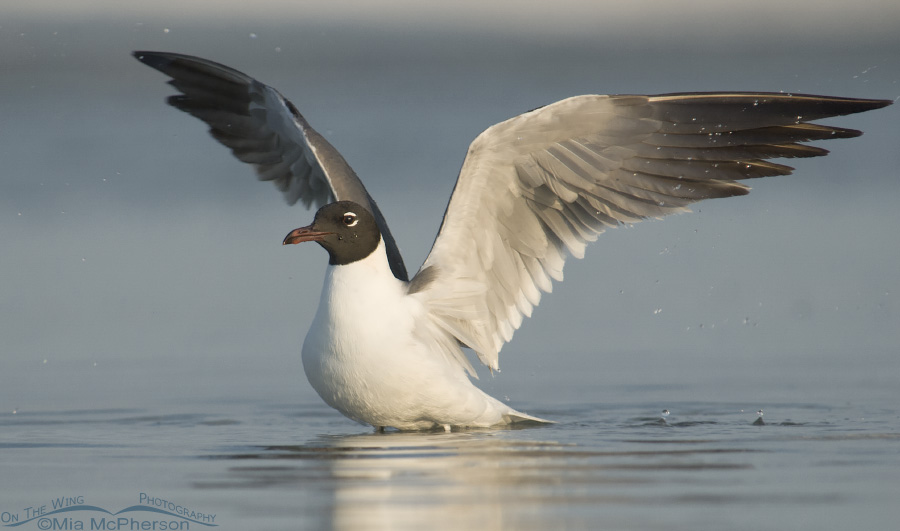 Bathing Laughing Gull with wings up
Bathing Laughing Gull with wings up
Laughing Gulls are almost entirely coastal and prefer islands to nest on. Franklin’s Gulls do show up in Florida during the winter so looking for them carefully in flocks of Laughing Gulls could be productive.
A Laughing Gull was found by Matthew Pendleton here in Utah in January of 2015 and was a first record for the state.
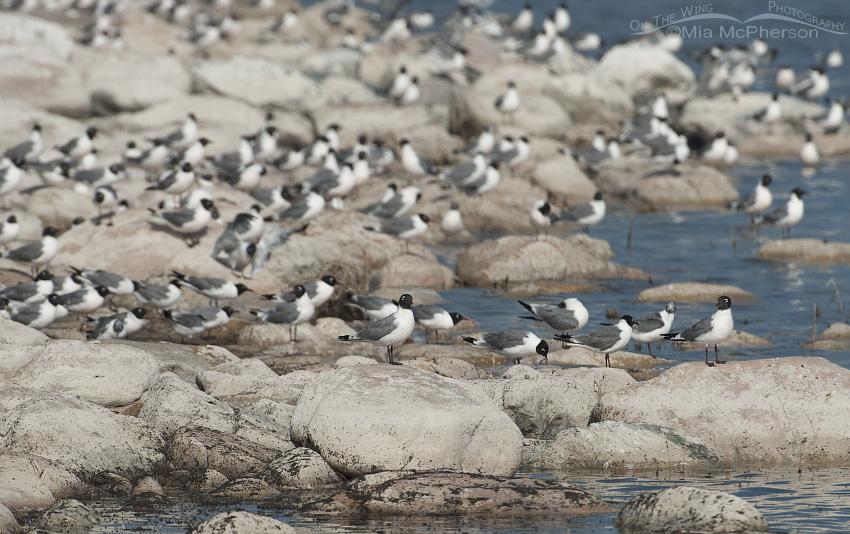 Hundreds of Franklin’s Gulls feeding on the Great Salt Lake Brine flies
Hundreds of Franklin’s Gulls feeding on the Great Salt Lake Brine flies
I am fortunate to see Franklin’s Gulls by the thousands from the causeway to Antelope Island State Park, at Bear River Migratory Bird Refuge and further north I often see them at Red Rock Lakes National Wildlife Refuge. The Great Salt Lake provides this species with plenty of food because of the brine flies and midges found there. It is not unusual to see them picking the brine flies off the surface of the lake, on the shoreline or rocks on the shore. They also feed by standing in one place picking the brine flies out of the air.
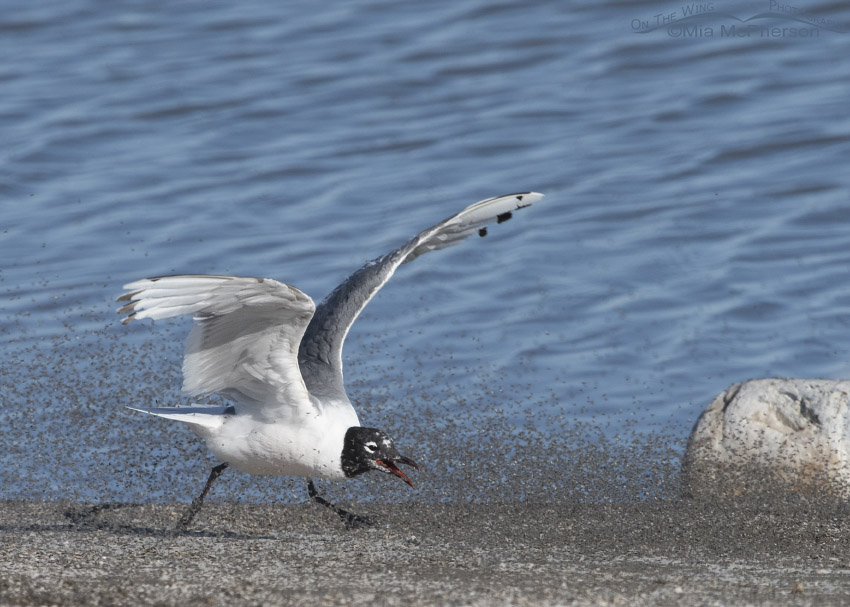 Franklin’s Gull chasing Brine flies
Franklin’s Gull chasing Brine flies
I don’t often see Franklin’s Gulls chasing brine flies like the California Gulls do so when I see it I like to stop and take images of them running through clouds of brine flies.
I know this isn’t a complete Franklin’s Gull and Laughing Gull comparison but I’m not a scientist, just a bird photographer and bird lover. Oh yeah, I also appreciate the grace and beauty of gulls.
Life is good.
Mia
Click here to see more of my Franklin’s Gulls photos and here for more of my Laughing Gull images.


Thank you. That was very helpful. When I go to Oban, Scotland, there are so many gulls. I wish I could take you with me.
I don’t think that gull was chasing brine flies precisely. Standing still with an open mouth looks as if it would do the trick.
EC, they do that too, stand in one place and just move their heads to snap up the flies in mid air. I must admit they look funny doing that!
Thanks for the information Mia!
My pleasure!
Very interesting comparisons…I wonder how long I’ve been lumping the two together…also wonder just how many different kinds of gulls there are….must be many.. Thanks for identifying the differences between these two…
I don’t know about world wide but North America has 27 gull species Patty. That doesn’t include vagrants that show up from other parts of the world. Gulls are difficult to ID because the larger gulls often hybridize plus some gull species take 4 to 5 years to get adult plumage, much like Bald Eagles and go through several phases before they even look like the adults.
I had no clue!!! Every bit of this is new to me…and very interesting!!
Beautiful photos, Mia. Love the documentary on Gulls.
Thank you Bob!
Mia… you may want to check the wording in the description of Franklin, vs Laughing Gulls under the first photo…
No big deal, we all do it. Just proves we’re not robots, but humans… As always, love your photos. Thanks for
brightening up my morning… take care, be safe, and stay well.. ;-)))
Roger, thank you very much for pointing out the mistake I made in the name, I have corrected it! Good thing I can edit it on my phone! Thank you for your comments on my images. I always appreciate them.